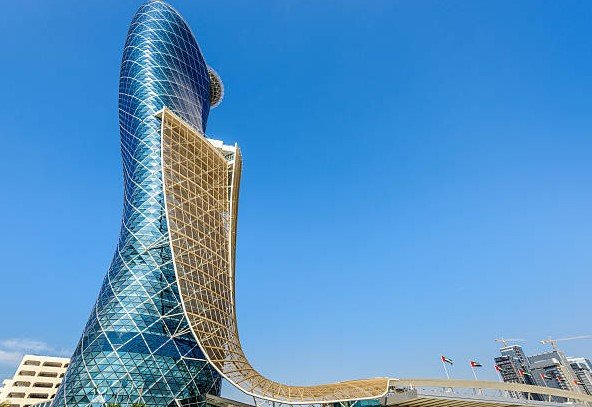Central Bank data shows a quiet but steady wave of growth in April — and foreign money is playing a bigger role than before
The UAE’s banking sector added another notch to its expansion belt in April, crossing Dhs4.749 trillion in total assets — a subtle but meaningful rise from the month before. It’s not a boom, but it sure isn’t a bust either.
And while the headline growth is modest at 0.6%, the details in the Central Bank’s new report are worth a closer look. Credit, deposits, and even foreign activity all seem to be moving in sync — and that’s not something you see every quarter.
A Steady Climb in Assets, Credit, and Deposits
April wasn’t dramatic. It was efficient.
The Central Bank of the UAE’s Summary Report shows total banking assets, including bankers’ acceptances, edged up to Dhs4.749 trillion from Dhs4.719 trillion in March. That’s a Dhs30 billion increase in one month — no fireworks, but no red flags either.
Credit activity also kept pace. Total bank credit jumped 0.9%, ending April at Dhs2.259 trillion. That’s a Dhs19 billion leap, driven by domestic and foreign loans. Not bad, considering how cautious the market has been.
The gains didn’t come from one corner. Instead, the uptick was a blend of:
-
Dhs12.3 billion rise in domestic credit
-
Dhs7.1 billion rise in foreign credit
-
0.7% more credit to the government sector
-
1.2% more to government-related entities
-
0.6% rise in credit to private firms
And then, there’s the twist — a 4.3% dip in loans to non-banking financial institutions. That part? Worth watching.
Just a one-liner here for flow.

Deposits Don’t Just Rise — They Shift
Bank deposits crossed Dhs2.965 trillion, up 1% from the previous month. But the story isn’t just about more money — it’s about where that money came from.
Resident deposits barely budged, climbing just 0.1%. But non-resident deposits? They surged 10.9% to Dhs275.6 billion. That’s a sharp move — and it might signal deeper confidence from international investors, or simply an opportunistic arbitrage on higher UAE rates.
This part of the report is easy to miss — but it’s telling. Foreign money doesn’t come in unless the risk-reward ratio looks good. So something’s attracting them, whether it’s stability, spreads, or just a need to diversify.
One sentence paragraph for rhythm.
Let’s Break Down the Numbers
Here’s how the key indicators looked between March and April 2025:
| Metric | March 2025 | April 2025 | % Change |
|---|---|---|---|
| Total Banking Assets | Dhs4.719 trillion | Dhs4.749 trillion | +0.6% |
| Total Bank Credit | Dhs2.240 trillion | Dhs2.259 trillion | +0.9% |
| Domestic Credit | — | +Dhs12.3 billion | — |
| Foreign Credit | — | +Dhs7.1 billion | — |
| Total Deposits | Dhs2.936 trillion | Dhs2.965 trillion | +1.0% |
| Resident Deposits | ~Dhs2.686 trillion | ~Dhs2.689 trillion | +0.1% |
| Non-Resident Deposits | ~Dhs248.5 billion | Dhs275.6 billion | +10.9% |
Those non-resident inflows? That’s the standout.
Sector-Wise Lending Patterns Show Where the Action Is
April’s credit growth didn’t come evenly. Some sectors pulled ahead, others stalled.
Private companies saw a mild boost — 0.6%. Not overwhelming, but it breaks the flatline pattern from early 2025. The public sector (government-related entities) fared better with a 1.2% jump, reflecting large-scale infrastructure or project financing activity.
But the 4.3% slump in credit to non-banking financial institutions (NBFIs) is a red mark. That’s not a seasonal dip — it’s been trending for months now.
-
NBFIs are facing tighter scrutiny from both lenders and regulators.
-
Some banks have pulled back exposure citing compliance risks.
-
Others are waiting for more clarity on fintech licensing and cross-border digital finance regulations.
Just a quick thought — sometimes contraction in one segment helps keep the broader system safer. But if NBFIs can’t recover soon, it might choke off some innovation in the consumer lending space.
A short paragraph here to reset tone.
What’s Driving Foreign Money Into UAE Banks?
The 10.9% jump in non-resident deposits didn’t come out of nowhere.
The UAE has remained one of the few economies in the region where monetary policy credibility and capital safety move in lockstep. Add to that the attractive dirham peg, real estate growth in Abu Dhabi and Dubai, and relatively steady inflation — and the safe-haven appeal starts to shine.
There’s also been chatter in investment circles that Gulf sovereign wealth funds are reallocating more cash into regional bank accounts instead of global treasuries. Whether this is a short-term shift or a longer-term rotation remains to be seen.
And frankly, global investors are a little fed up with volatile rate regimes elsewhere.
One sentence. For feel.
So, Is This Growth Real or Just Window Dressing?
It’s a fair question.
On paper, 0.6% monthly asset growth might look like noise. But when credit, deposits, and foreign activity all move in the same direction — even slowly — it signals quiet confidence.
This isn’t a hot-money surge or an oil-fueled spike. It’s methodical. Boring, even.
And in the banking world? Boring is sometimes exactly what you want.








